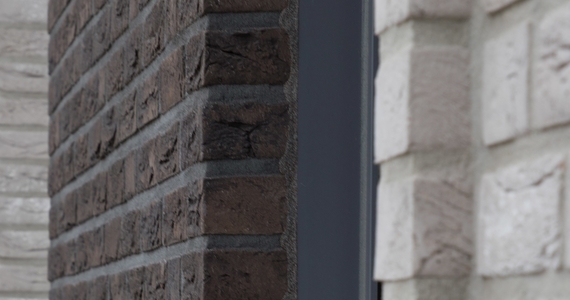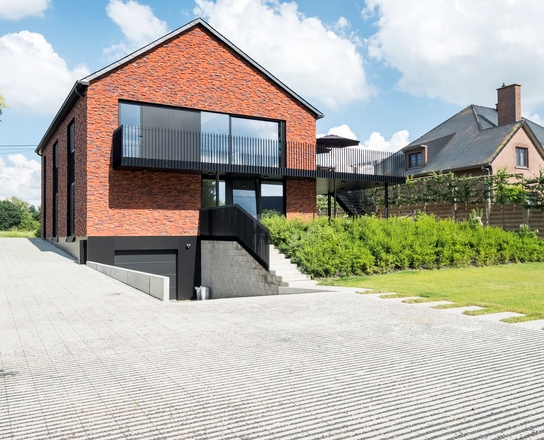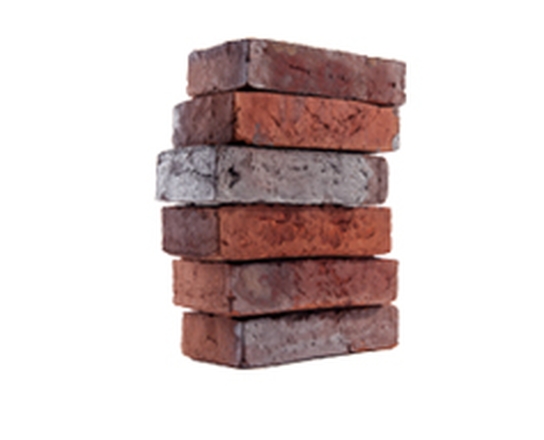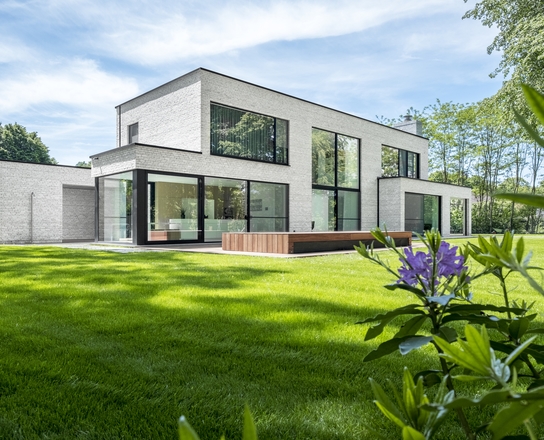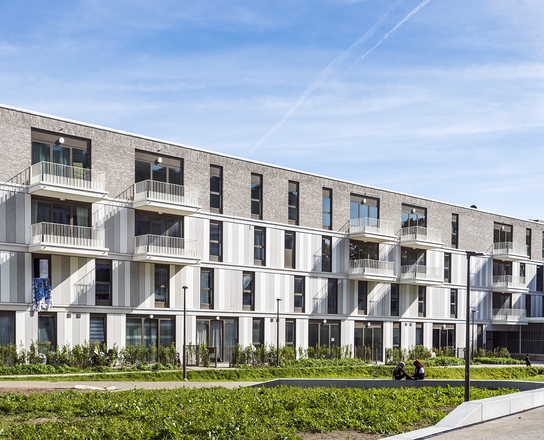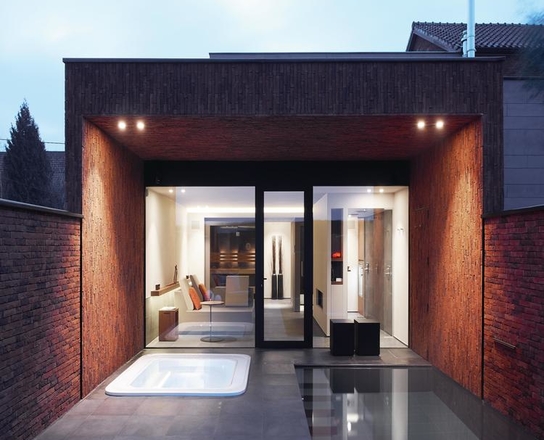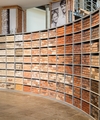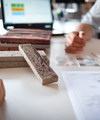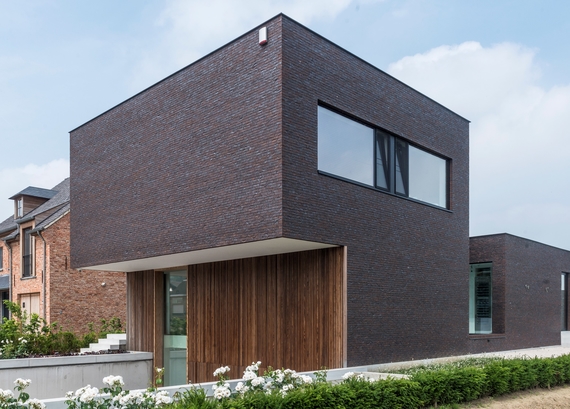
Joint types and colours
The joint largely determines the appearance of your façade. There’s a suitable joint colour for every colour of brick. Light, dark or uniform – the effect is always surprisingly different. If you’re looking for the pure effect of brick, then you’ll likely want to avoid joints altogether. Which is great – opt for joint-free.
A façade consists of 20% joints
What is the effect of joints on your façade? The joint plays a more than important role in the end result. Depending on the size of brick used ,a façade may be 10 to 20% joint. Take the time to decide on the colour of the joint, as the right joint is the perfect finish for a façade. The shape of the joint also impacts the look of a façade. The deeper the joint, the more relief and the greater the depth effect. This can help to create a shadow interplay between the joint and facing brick, helping to emphasise the colour of the brick even more.
Tip: Point a small piece of façade first so that you see the full effect before pointing the remainder.
Joint-free brickwork for a smooth brick effect
Are you a fan of a pure brick effect and a sleek finish? If so, the joint-free method is almost certainly for you. You wouldn’t be the first! More and more people are now opting for a joint-free façade. There are three known ways of creating joint-free brickwork.
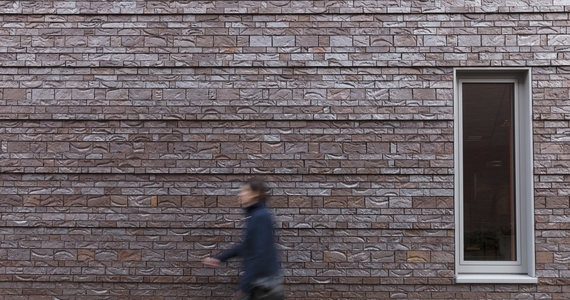
Bonding instead of bricklaying
With this technique, adhesive mortar is used instead of cement mortar. A larger quantity of adhesive is added, helping to increase the bearing strength of thejoint mortar. The joint width is only 3 to 6 mm, depending on the dimensional stability of the facing brick. This technique allows 100% joint-freebrick laying. With a higher strength,thanks to the adhesive mortar, the structural possibilities are greater. These include wider openings in the façade, or corbelling.
Joint-free bricklaying with thin-bed mortar
Thin-bed mortar is a cement mortar to which an adhesive fraction has been added. This helps to increase the adhesion strength of the joint mortar, allowing the width of the joint to be reduced to 4 to 8 mm. The mortar is laid slightly recessed and there is no need for repointing. This is a particularly interesting technique on facing bricks with a more capricious shape – the bricklayer retains the flexibility to compensate for the different shapes. A thin-bed mortar is not significantly more expensive than standard cement mortar, and is laid with a trowel.
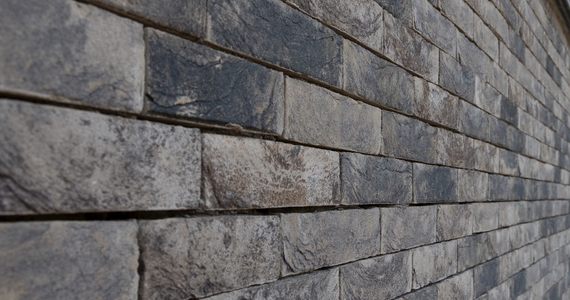
It was our decision to lay the facing bricks in a random pattern using a thin-bed mortar. The hand-form variant helped ensure a nice, playful line with thin joints.
Traditional bricklaying with a joint-free appearance
The Zero facing brick gives you an extremely sustainable façade with sleek, modern lines that really highlight the purity of the bricks. Zero is the genius of simplicity. Actually, it is no more than a specific size of facing brick that can be used for traditional bricklaying with a mortar joint and trowel. At the same time, it can be used for façades with thin joints of 3 to 6 mm. The difference between this and traditional bricklaying is in the positioning of the bricks. The brick no longer needs to be laid vertically, but can be tilted.
When Zero brickwork is carried out properly, much less mortar is visible in the joints than with traditional bricklaying. The colour of the brick remains (almost) unaffected by the colour of the joint. For a uniform effect, tone-on-tone joint mortar is most suitable, such as a red coloured joint mortar for a red facing brick. This gives you exactly what you have been looking for: a pure, flawless brick façade that fits perfectly with your modern project.
Your favourite facing brick with joint effect
Give your façade that added touch with the right brick laying technique. The larger the size, the higher the proportion of brick in relation to the joint mortar. And vice versa. Use our colour selector to find your favourite facing brick quickly and easily.
- Filter by colour or style
- View tangible examples
- Download joint effects or 3D textures
- Be inspired by more than 100 reference apartments
